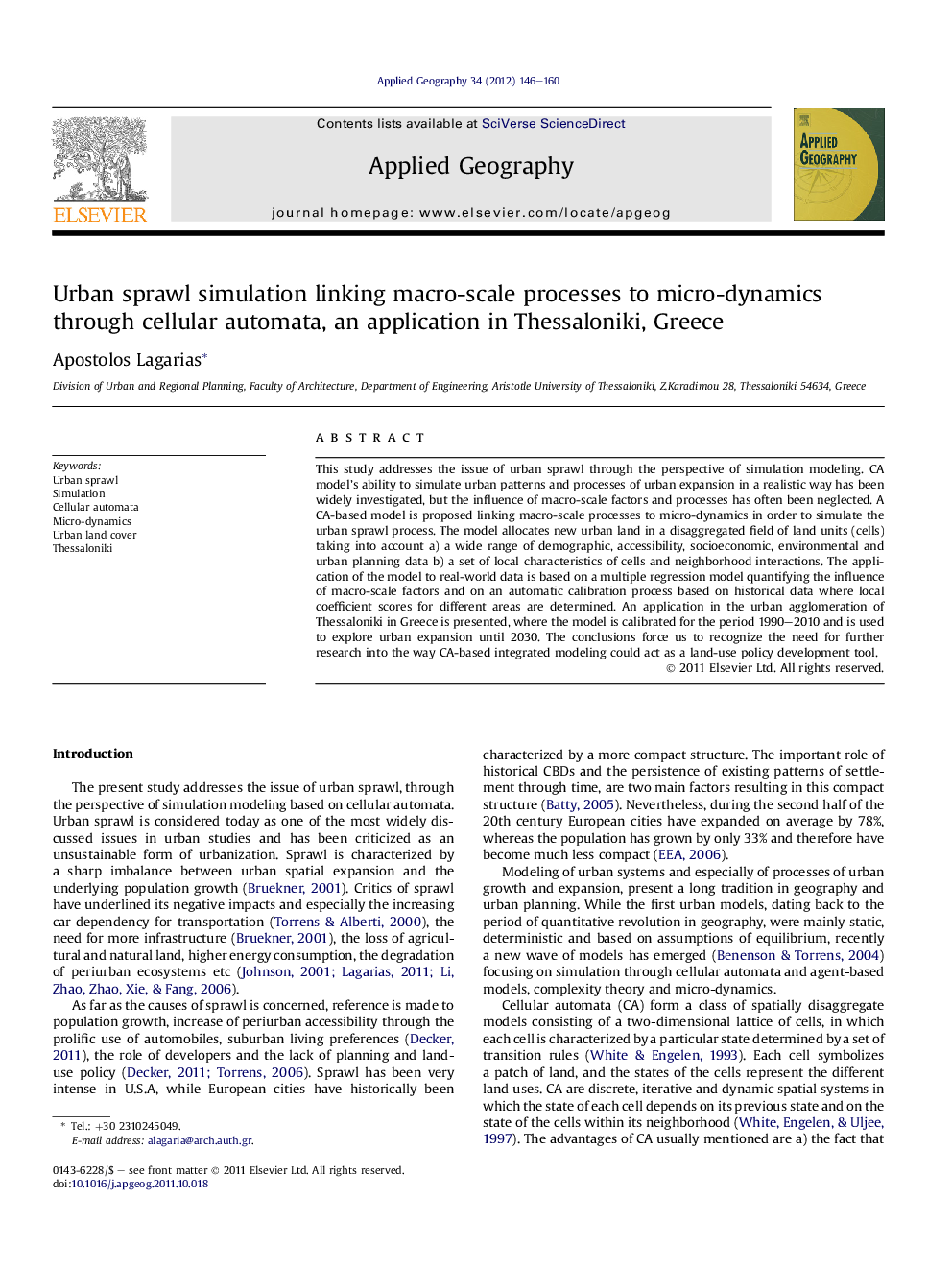| Article ID | Journal | Published Year | Pages | File Type |
|---|---|---|---|---|
| 83419 | Applied Geography | 2012 | 15 Pages |
This study addresses the issue of urban sprawl through the perspective of simulation modeling. CA model’s ability to simulate urban patterns and processes of urban expansion in a realistic way has been widely investigated, but the influence of macro-scale factors and processes has often been neglected. A CA-based model is proposed linking macro-scale processes to micro-dynamics in order to simulate the urban sprawl process. The model allocates new urban land in a disaggregated field of land units (cells) taking into account a) a wide range of demographic, accessibility, socioeconomic, environmental and urban planning data b) a set of local characteristics of cells and neighborhood interactions. The application of the model to real-world data is based on a multiple regression model quantifying the influence of macro-scale factors and on an automatic calibration process based on historical data where local coefficient scores for different areas are determined. An application in the urban agglomeration of Thessaloniki in Greece is presented, where the model is calibrated for the period 1990–2010 and is used to explore urban expansion until 2030. The conclusions force us to recognize the need for further research into the way CA-based integrated modeling could act as a land-use policy development tool.
► Presentation of an newly developed CA-based urban sprawl model. ► Use of socioeconomic, accessibility, urban planning data etc as explanatory factors. ► Establishment of a link between macro-scale processes and micro-dynamics. ► Evaluation of recent periurban processes in the city of Thessaloniki, Greece. ► Exploration of future expansion scenario in the study area based on current trends.
